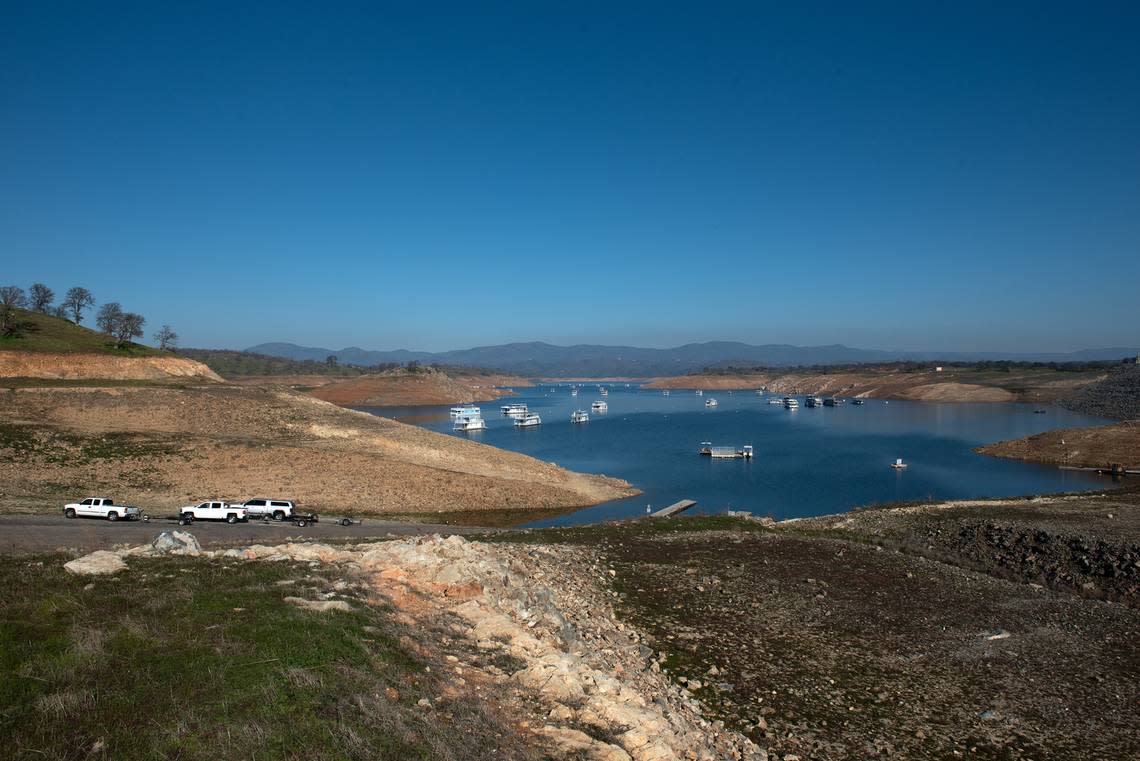Few farmers opted for excess river water to reduce well pumping east of Modesto area. Why?

Above-average storms have allowed the Modesto Irrigation District to offer Tuolumne River water to nearby farmers who normally tap wells. It is getting few takers.
The program is designed to boost the stressed aquifer generally east of Waterford, just outside MID boundaries. The district board on Tuesday debated whether to drop the price to spur interest, but a majority voted to leave it unchanged.
The discussion came amid a state mandate to make groundwater use sustainable by about 2040. MID does not have a major problem within its territory, which stretches west to the San Joaquin River. But it is part of a regional effort to comply with the 2014 law.
This includes out-of-district sales of Tuolumne water in years when MID’s own farmers have plenty. That was the case in 2023, one of the wettest years on record, and this year thanks to storage in Don Pedro Reservoir.
Only four outside farmers sought MID water
The district staff planned on outside sales this year of up to 60,000 acre-feet of water. Only four farmers applied, for a total of 1,500. An acre-foot is enough to cover an acre a foot deep. Crops typically need three to four over the growing season.
The price is $200 per acre-foot, set by the board last August. Board member Larry Byrd on Tuesday suggested reducing it to $60 for the rest of the irrigation season.
“No one’s taking a drop of water,” he said. “... It’s not going to work at $200.”
Byrd’s motion got support from board member Nick Blom. Janice Keating, Robert Frobose and John Boer voted against it.
Defenders of the $200 price said it is the same as the Oakdale Irrigation District, just north of MID on the Stanislaus River.
Frobose said the reduced price would amount to subsidizing outside farmers. Some of them are not near the canals, so they have to install pipelines and other infrastructure.
Boer said he did not want to change the price in the middle of irrigation season.
Water price was an issue last year, too
A similar issue arose when the MID board established the program last year. The board initially discussed $80 for the first acre-foot and $60 for each of the next three. It was approved at $200 after critics complained about undervaluing the water.
The program allows outside farmers to sign 20-year contracts for MID river water, which helps them invest long-term in the infrastructure. It is available in years defined as wet or above normal, projected to be seven out of the 20 years. Average and drier conditions will mean no access to the MID canals for these farmers.
The state law is the Sustainable Groundwater Management Act. It will require reductions in well pumping along with recharge projects. The latter can include building basins where storm runoff can seep into the ground, spreading excess water across farm fields, and restoring floodplains along rivers.
Why doesn’t MID just save the water for itself?
MID could keep the excess water in Don Pedro to guard against a drier 2025 for its farmers. But the reservoir is still relatively high for this time of year, and the snowmelt will go on for several weeks. As of Tuesday, Don Pedro was at 94% of its capacity and 117% of the historical average for May 28, the California Department of Water Resources reported.
MID leaders have said the region can best comply with the state law by putting excess river flows into the ground whenever possible.


